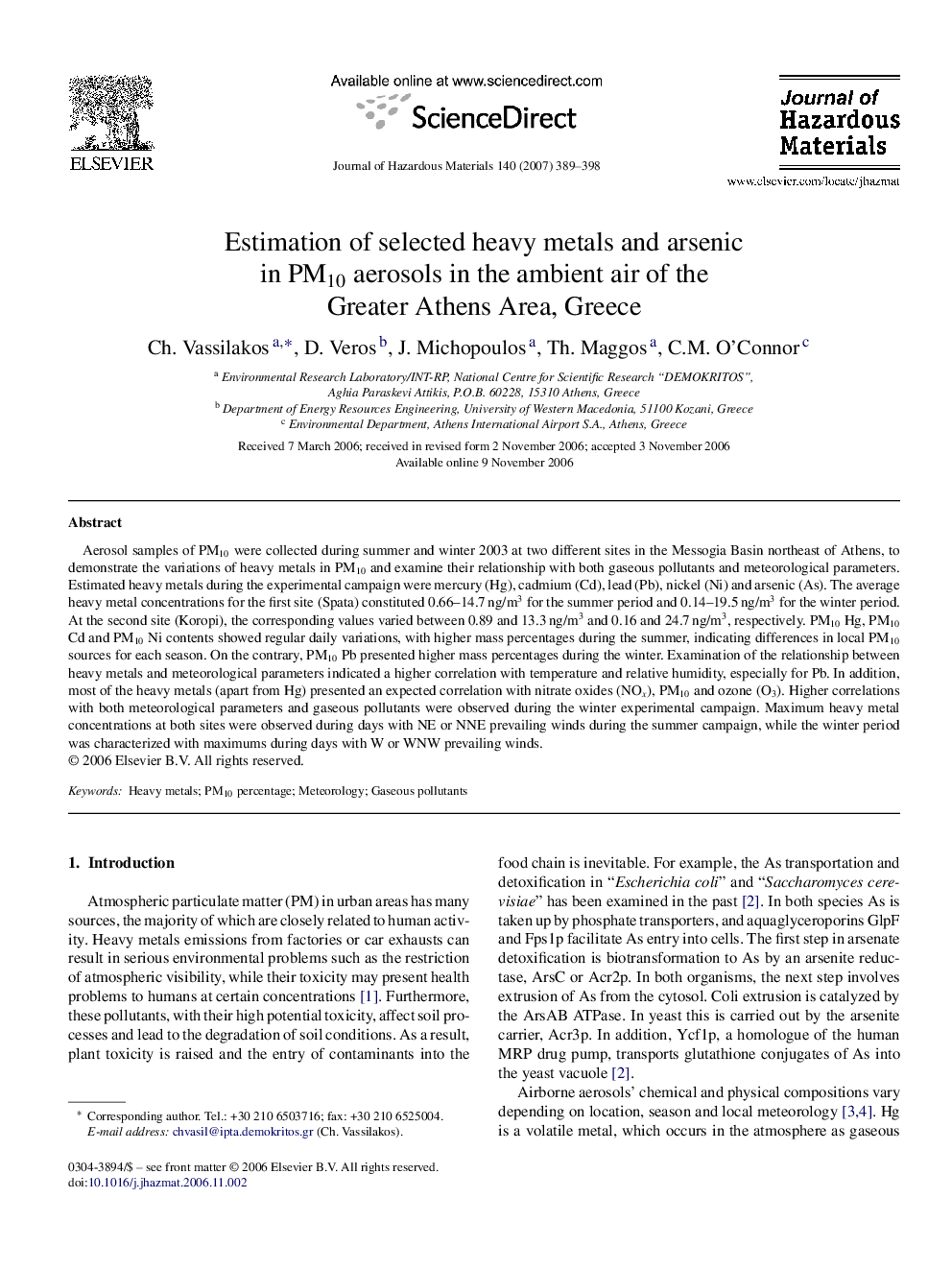| Article ID | Journal | Published Year | Pages | File Type |
|---|---|---|---|---|
| 585028 | Journal of Hazardous Materials | 2007 | 10 Pages |
Abstract
Aerosol samples of PM10 were collected during summer and winter 2003 at two different sites in the Messogia Basin northeast of Athens, to demonstrate the variations of heavy metals in PM10 and examine their relationship with both gaseous pollutants and meteorological parameters. Estimated heavy metals during the experimental campaign were mercury (Hg), cadmium (Cd), lead (Pb), nickel (Ni) and arsenic (As). The average heavy metal concentrations for the first site (Spata) constituted 0.66-14.7Â ng/m3 for the summer period and 0.14-19.5Â ng/m3 for the winter period. At the second site (Koropi), the corresponding values varied between 0.89 and 13.3Â ng/m3 and 0.16 and 24.7Â ng/m3, respectively. PM10 Hg, PM10 Cd and PM10 Ni contents showed regular daily variations, with higher mass percentages during the summer, indicating differences in local PM10 sources for each season. On the contrary, PM10 Pb presented higher mass percentages during the winter. Examination of the relationship between heavy metals and meteorological parameters indicated a higher correlation with temperature and relative humidity, especially for Pb. In addition, most of the heavy metals (apart from Hg) presented an expected correlation with nitrate oxides (NOx), PM10 and ozone (O3). Higher correlations with both meteorological parameters and gaseous pollutants were observed during the winter experimental campaign. Maximum heavy metal concentrations at both sites were observed during days with NE or NNE prevailing winds during the summer campaign, while the winter period was characterized with maximums during days with W or WNW prevailing winds.
Related Topics
Physical Sciences and Engineering
Chemical Engineering
Chemical Health and Safety
Authors
Ch. Vassilakos, D. Veros, J. Michopoulos, Th. Maggos, C.M. O'Connor,
